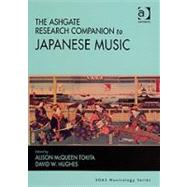
Note: Supplemental materials are not guaranteed with Rental or Used book purchases.
Purchase Benefits
What is included with this book?
| List of figures | p. ix |
| List of musical examples | p. xiii |
| List of tables | p. xvii |
| Stylistic conventions | p. xix |
| Foreword and acknowledgements | p. xxi |
| List of contributors | p. xxiii |
| Context and change in Japanese music | p. 1 |
| Court and religious music (1): history of gagaku and shomyo | p. 35 |
| Court and religious music (2): music of gagaku and sh&obar;my&obar; | p. 49 |
| The musical narrative of The Tale of the Heike | p. 77 |
| The Kyushu biwa traditions | p. 105 |
| No and kyogen: music from the medieval theatre | p. 127 |
| The shakuhachi and its music | p. 145 |
| S&obar;kyoku-jiuta: Edo-period chamber music | p. 169 |
| Giday&ubar;-bushi: music of the bunraku puppet theatre | p. 197 |
| Music in kabuki: more than meets the eye | p. 229 |
| Popular music before the Meiji period | p. 261 |
| Folk music: from local to national to global | p. 281 |
| The music of Ryukyu | p. 303 |
| The music of the Ainu | p. 323 |
| Popular music in modern Japan | p. 345 |
| Western-influenced 'classical' music in Japan | p. 363 |
| Bibliography | p. 383 |
| Audio/Videography | p. 421 |
| Contents of accompanying compact disc | p. 427 |
| Index | p. 433 |
| Table of Contents provided by Ingram. All Rights Reserved. |
The New copy of this book will include any supplemental materials advertised. Please check the title of the book to determine if it should include any access cards, study guides, lab manuals, CDs, etc.
The Used, Rental and eBook copies of this book are not guaranteed to include any supplemental materials. Typically, only the book itself is included. This is true even if the title states it includes any access cards, study guides, lab manuals, CDs, etc.